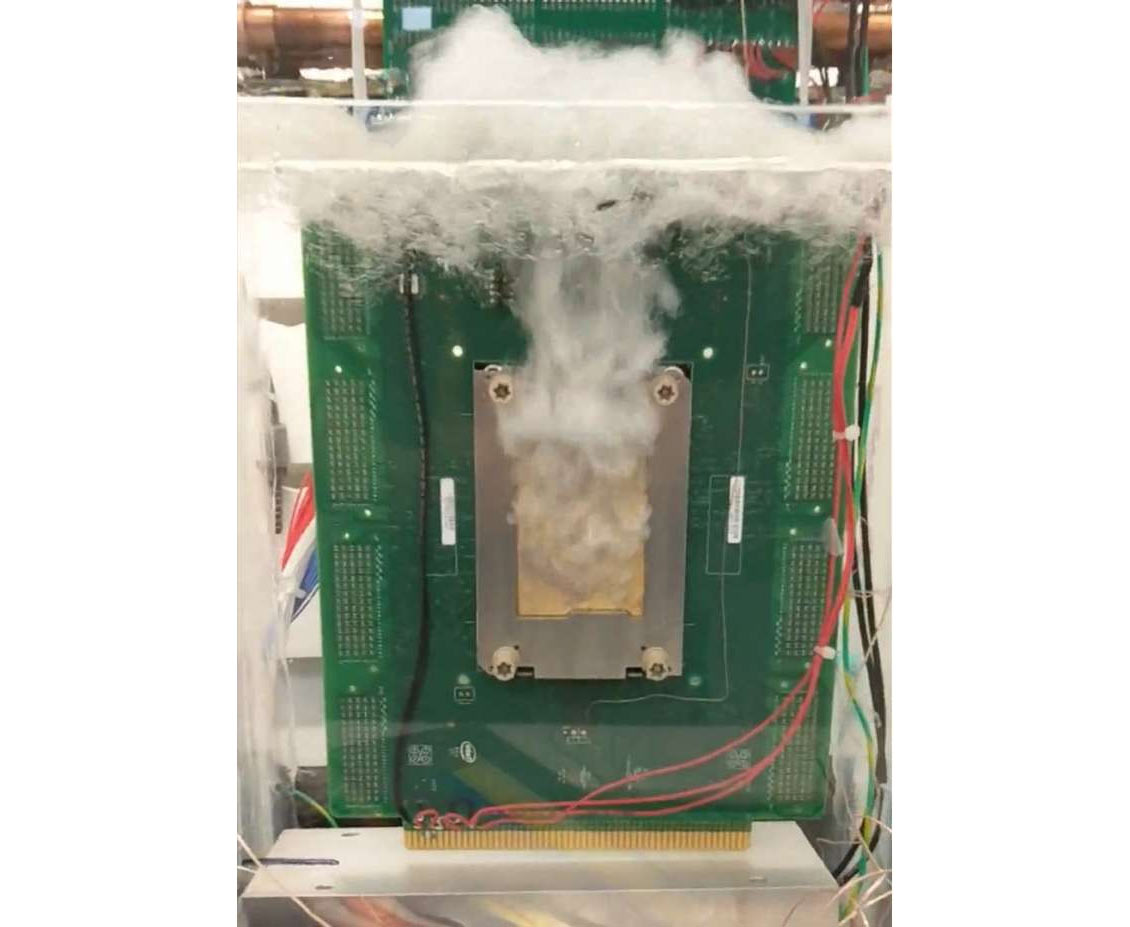
Intel today announced that its innovative immersion cooling technology has gained its first big customer - the U.S. Department of Energy (DOE). Intel's cooling tech will be developed and implemented with the backing of $1.71 million in funding over three years. This particular technology, which is expected to come into play in the DOE's data centers, was outlined back in April, including novel technologies capable of cooling processors up to 2,000 W. Intel is one of 15 organizations that the energy department has entrusted with creating cooling solutions for upcoming data centers.
The hefty funding comes via the COOLERCHIPS program – Cooling Operations Optimized for Leaps in Energy, Reliability, and Carbon Hyperefficiency for Information Processing Systems. This program is supported by the DOE's Advanced Research Projects Agency-Energy (ARPA-E). Apparently, the goal is to "enable the continuation of Moore’s Law," by allowing Intel to include more processing cores to its highest performance processors, with the reassurance that there will be coolers capable of handling 2,000 W chips. For context, today's most powerful data center processors are fast approaching 1,000 W.

Intel is working with a mix of academic and industry researchers to create its two-phase immersion cooling solution. Being of the two-phases type means that, as well as the electronics being cooled by being immersed in liquid, the cooling action is enhanced by the coolant going through a phase change. From Intel's description, we understand that its immersion system is combined with vapor chambers (the phase change location). Moreover, heatsinks within the phase change chambers use a kind of coral-like design for efficient fluid flow, enhanced by innovative boiling enhancement coatings. The way that the coral-like heat sink design will be generatively created and 3D printed reminds us of cooling technology solutions touted by Diabatix and Amnovis, but Intel's press release doesn't specifically name any industry partners. As for the chamber coatings, they might use nanocoatings, possibly graphene, for the touted "boiling enhancement" properties.

As well as enabling chips approaching or exceeding 2,000 W TDPs, the new immersion cooling tech from Intel is claimed to be more efficient than any existing cooling technologies. This is important, as Intel claims that cooling currently accounts for up to 40% of total data center energy use. Intel says the teams assisting in this project are aiming to improve the two-phase system that is in development. Its ambitious goal is to improve the 0.025 degrees C/watt capability of the existing system by 2.5X or more.







